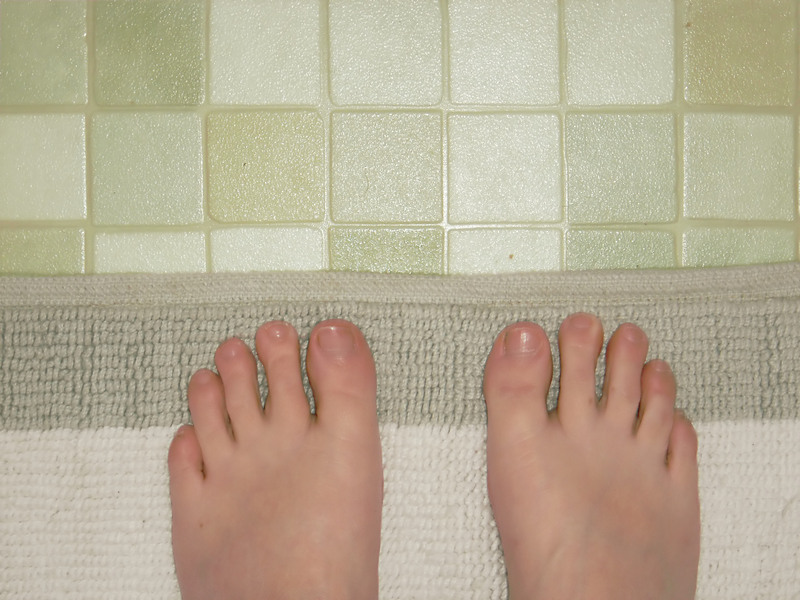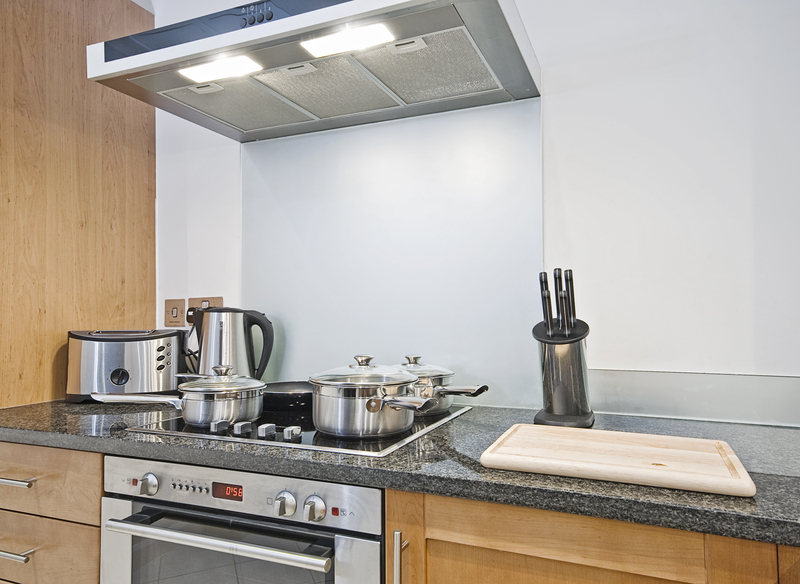Master Grease Removal: Easy Methods for Enamel Oven Trays
Posted on 17/08/2025
Master Grease Removal: Easy Methods for Enamel Oven Trays
Are your enamel oven trays looking dull and greasy after countless cooking sessions? If you're tired of stubborn grime and want to learn how to master grease removal, you've come to the right place. This guide covers expert-recommended and easy methods for achieving spotlessly clean enamel trays. Whether you're dealing with baked-on stains or everyday splatters, keep reading to discover the ultimate tricks for regaining your tray's shine.
Why Is Grease Removal Important for Enamel Oven Trays?
Enamel oven trays are popular for their durability and nonstick properties. However, even the toughest trays accumulate grease and burnt-on residue over time. Effective grease removal:
- Enhances food flavor by preventing old grease from transferring odors or taste.
- Extends the lifespan of your trays by preventing corrosion and staining.
- Keeps your oven and kitchen hygienic and free from bacteria build-up.
- Restores the aesthetic appeal of your enamel cookware.
Learning easy methods for enamel tray grease removal will help you maintain a safer and more efficient kitchen.

Common Challenges with Cleaning Enamel Trays
While enamel is designed to withstand high heat and heavy use, cleaning it isn't always simple. Some common problems include:
- Stubborn baked-on grime that regular washing can't shift.
- Risk of scratching the enamel coating with abrasive tools.
- Discoloration if grease remains after multiple uses.
- Unpleasant greasy residues that cause smoke and odors.
Understanding these challenges is the first step in finding proven solutions for mastering grease removal from enamel oven trays.
Preparing for Grease Removal: Safety and Supplies
Before you begin, gather your cleaning toolkit. For safe and successful grease removal, you'll need:
- Non-abrasive sponges or cloths
- Baking soda
- White vinegar
- Washing-up liquid or mild dish soap
- Hot water
- Rubber gloves for hand protection
- An old toothbrush for scrubbing corners
- Optional: commercial degreaser, but ensure it is suitable for enamel surfaces
Tip: Always avoid steel wool, wire brushes, or harsh chemicals as these can damage the enamel and cause chips or decorrosion.
Step-By-Step Easy Methods for Grease Removal from Enamel Oven Trays
1. The Baking Soda and Vinegar Soak Method
A classic and gentle approach, this method loosens stubborn grease without damaging your enamel tray.
- Sprinkle a generous layer of baking soda over the greasy and stained areas of your tray.
- Spray or pour white vinegar over the baking soda. You'll notice a fizzing, which helps break down grease.
- Let the mixture sit and bubble for 20-30 minutes.
- Fill the tray with hot water and leave it to soak for up to 1 hour for maximum effect.
- Use a non-abrasive sponge or soft-bristled brush to gently scrub away loosened grease.
- Rinse thoroughly with clean hot water and allow to air-dry.
Why it works: Baking soda is a mild abrasive and has natural degreasing properties, while vinegar helps dissolve built-up grime.
2. Dish Soap and Boiling Water
When grease is fresh, this method is simple yet very effective:
- Fill your sink with boiling (or very hot) water.
- Add a generous squirt of quality dish soap, so the water becomes sudsy.
- Submerge the enamel tray and let it soak for at least 30 minutes.
- Use a soft sponge to wipe away grease, re-soaking if needed for tougher spots.
- Rinse thoroughly to remove all soap residue, then let the tray dry.
Pro tip: If the tray is too large for the sink, fill the tray itself with hot soapy water and allow it to stand. Repeat the process as necessary for best results.
3. Baking Soda Paste
For baked-on or burnt stains that won't budge, try a targeted approach:
- Mix baking soda with a little water until you form a thick paste.
- Apply to greasy areas and leave it on for at least 30 minutes (or overnight for extremely tough stains).
- Gently scrub with a sponge or soft brush.
- Rinse and dry thoroughly.
Baking soda paste can be especially helpful for those hard-to-reach corners and edges of enamel trays.
4. Using a Commercial Degreaser (Enamel Safe)
If you prefer a store-bought solution:
- Select a degreaser labeled safe for enamel surfaces.
- Read and follow the manufacturer's instructions carefully to avoid damaging your tray.
- Apply as directed and allow the recommended dwell time.
- Thoroughly rinse and remove any chemical residue.
Warning: Some oven cleaners may be too harsh and can cause enamel to lose its glossy finish. Always spot-test in an inconspicuous area first.
5. Lemon and Salt Scrub
Want a natural and fresh-smelling alternative for mastering grease removal?
- Cut a lemon in half and dip the cut side into fine salt.
- Scrub the greasy areas of the tray, squeezing gently to release lemon juice.
- Let the mixture sit for 15-20 minutes, then rinse with hot water.
Lemon acts as a natural degreaser and helps neutralize odors, while salt provides gentle scrubbing power.
6. Hydrogen Peroxide and Baking Soda (For Stubborn Stains)
For persistent stains, this method offers a powerful yet safe way to clean enamel:
- Sprinkle baking soda over stained or greasy spots.
- Pour hydrogen peroxide onto the baking soda until a paste forms.
- Let it sit for 1-2 hours.
- Scrub gently with a soft brush and rinse thoroughly.
Caution: Always use in a well-ventilated area and wear gloves to protect your skin.
Tips to Prevent Grease Build-Up on Enamel Oven Trays
- Wipe trays immediately after each use--don't let residue sit and harden.
- Line trays with parchment paper or aluminum foil for easy clean-up, especially when roasting fatty foods.
- Avoid using cooking sprays or oils excessively, which can create a sticky film.
- Regularly inspect trays for chips or damage, as grease can settle in cracks.
- Use oven-safe mats to catch drips and spills.
Routine maintenance is the key to keeping your enamel trays looking like new.
How Often Should You Clean Enamel Oven Trays?
Deep cleaning frequency depends on usage. For the best kitchen hygiene and to master grease removal:
- After every use: Wipe trays with soapy water and a non-abrasive sponge.
- Weekly: Soak in sudsy hot water for 30+ minutes, then scrub lightly.
- Monthly (or after heavy use): Use one of the advanced methods (like baking soda/vinegar soak) for a thorough clean.
If you notice smoke, odors, or visible residue, clean as soon as possible to prevent difficult stains.
What to Avoid When Cleaning Enamel Oven Trays
- Never use metal scrapers, steel wool, or harsh abrasives.
- Avoid bleach and highly acidic cleaners that can erode enamel coating.
- Do not subject trays to rapid temperature changes; allow them to cool before soaking to avoid cracking.
- Check manufacturer's guidelines to ensure you don't void any warranties with certain cleaners.
Protect your investment by using only suitable products and techniques.
Frequently Asked Questions about Enamel Oven Tray Grease Removal
Can I put enamel oven trays in the dishwasher?
Most enamel trays are dishwasher safe, but hand cleaning is gentler and extends their lifespan. Dishwashers can cause chips if trays knock against other items, so always check manufacturer's recommendations.
Is it safe to use oven cleaner on my enamel tray?
While some oven cleaners are safe, many are too strong and may dull or damage the enamel finish. Always use enamel-safe products and rinse thoroughly.
What do I do if there are black or burnt stains that won't come off?
Stubborn burnt stains can be treated with a baking soda/hydrogen peroxide paste or a targeted overnight soak with hot water and baking soda. Repeated gentle cleaning is preferable to harsh scrubbing.
Can chipped enamel trays still be used?
Minor chips may not render your tray unusable, but grease and water can seep into bare spots and cause rusting. Replace trays if chipping is severe.

Summary: Shine with Grease-Free Enamel Oven Trays
Mastering grease removal from enamel oven trays is easier than you think with the right approach. To recap:
- Use gentle soaking and proven household ingredients like baking soda, vinegar, lemon, and salt.
- Opt for enamel-safe degreasers for extra-tough jobs.
- Prevent build-up by quick cleaning after each use.
- Never use abrasive or corrosive materials that can damage enamel.
Maintaining clean, grease-free enamel trays ensures better tasting food, prolongs tray lifespan, and keeps your kitchen pristine--so you can cook with confidence every time!
Share Your Own Grease Removal Tips!
Have you mastered removing baked-on grease from your enamel oven trays? Share your favorite tips and success stories below, and help other home cooks achieve sparkling results!
Related Tags: Easy grease removal, clean enamel oven trays, how to degrease oven trays, grease-free enamel cooking, kitchen cleaning tips





